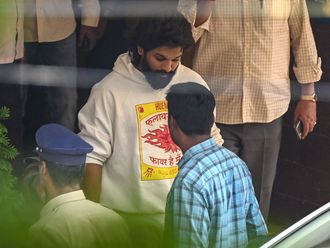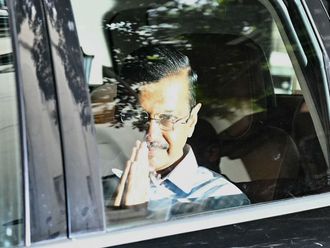The next general election in India is only months away but India’s political parties are anxiously waiting for the next big political exercise after that — the delimitation of assembly and Lok Sabha constituencies which is due in 2026 which could drastically change the next parliament and what it looks like.
A few months ago, BRS leader K.T. Rama Rao said the next delimitation could lead to a strong people’s movement in the Southern States, since it likely to reduce the number of Lok Sabha seats in the South. This is because population is a key criteria for delimitation and Southern states argue that they will be punished for better socio economic indices.
The political impact of this exercise will be huge, given that the Northern states, especially the Hindi belt, already determine who comes to power in Delhi. Which means the exercise will benefit the ruling BJP at the expense of regional parties, and that has bigger implications for India’s federal structure.
So what is delimitation and how does it work? Delimitation means drawing the boundaries of constituencies based on the population in the most recent census. India has done this exercise 4 times since independence and as per the Constitution, it is meant to be done every 10 years after the census.
Constitutional amendment
But in 1976, a constitutional amendment froze the process till after the census of 2001. This was further extended until after 2026. The last census was due to take place in 2021 but was first delayed by the pandemic and then for reasons that no one really knows.
The government has said most recently that work on the census will begin soon after the 2024 Lok Sabha elections. The aim of delimitation is to ensure that all Lok Sabha seats have roughly the same population. That means states that have a larger population will see an increase in seats — like Uttar Pradesh.
There are different projections that have been published in recent years on what the changed map could look like, but according to data compiled by ‘The Indian Express’ in September 2023, this is what we could see. UP could gain as many as 14 seats; Maharastra could go up from 48 to 50 seats; Madhya Pradesh from 29 to 34 seats; Bihar from 40 to 51 seats while Southern states will see a decline.
So Kerala could go down from 20 to 14 seats; Tamil Nadu from 39 to 30 seats and Andhra Pradesh from 25 to 20 seats. Telangana could lose two seats. This is why parties in the South have been more vocal about the delimitation exercise and the impact it will have. The South has generally done better on population control and yet resources are allocated to states by the centre are based on the census done in 1971.
The larger question is — should this be done by redistributing the seats in the Lok Sabha (giving some states more, and cutting from others) or expanding the size of the House, so that no seats are reduced anywhere but those states with a higher population could get more
Regional fault lines
A research paper published by Milan Vaishnav and Jamie Hinston of Carnegie in 2019 has gone into great detail on this. They project that 4 north Indian states (Bihar, Madhya Pradesh, Rajasthan, and Uttar Pradesh) would collectively gain 22 seats, while four southern states (Andhra Pradesh, Kerala, Telangana, and Tamil Nadu) would lose 17 seats. Based on their population projections, these trends will only intensify as time goes on.
In 2026, for instance, Bihar and Uttar Pradesh alone stand to gain 21 seats while Kerala and Tamil Nadu would forfeit as many as 16.
There is no doubt that as things stand today, the boundaries of constituencies need to be redrawn for better and fairer representation in Parliament. This should have been done every 10 years as was originally envisioned, so that the Lok Sabha would see gradual changes.
The larger question is — should this be done by redistributing the seats in the Lok Sabha (giving some states more, and cutting from others) or expanding the size of the House, so that no seats are reduced anywhere but those states with a higher population could get more.
This means the size of the Lok Sabha would have to go up to over 850 seats. Under this scenario, UP could see a huge jump to as many as 143 seats.
Either way, the Hindi heartland and therefore the ruling party stands to gain, and there is a concern that regional fault lines will deepen. This situation falls short of the ideal standard.








_resources1_16a45059ca3_small.jpg)

